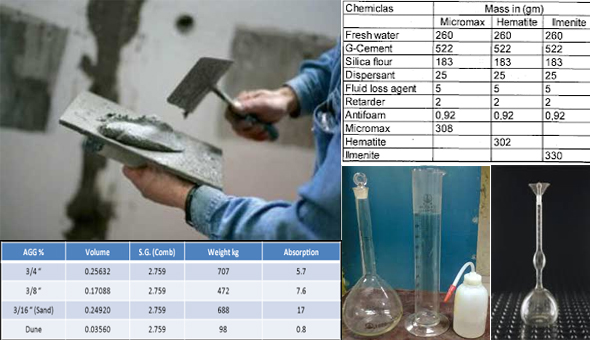How to find out specific cement gravity
- Concrete Cost Estimator
- Concrete Continuous Footing
- Landscape Bidding and Estimating
- Construction Cost Estimating
- Concrete and steel cost estimation
- Construction Cost Estimate Breakdown
- Construction Estimating Worksheet
- Home Construction Cost Estimate
- Estimate Pricing Sheet
- Sheet for General Contractor
- Construction Cost Estimate
- Labor Materials Cost Estimator
- Masonry Estimating Sheet
- Sheet for Building Contractor
- Construction Schedule Bar chart
- General Cost Estimator Sheet
- General Construction Estimate
- Building and Road Estimating Sheet
- Detailed expense estimates
- Door and Window Takeoff Sheet
- General Construction Cost Estimating Sheet

Finding out the specific gravity is generally defined as the ratio between the mass of a specified volume of substance and weight of a corresponding volume of water. To settle the specific gravity of cement, kerosene is used. If kerosene is combined with cement, it does not make any reaction.
Apparatus: Le Chaterlier”s flask, weighing balance, kerosene (without water).
Le Chaterlier”s flask, is built up from thin glass that contains a bulb at the base. The full capability of the bulb is roughly 250 ml. The bulb is roughly 7.8 cm in mean diameter. The unit for calculating stem is millimeters. The zero graduation exists at the space of 8.8 cm from the top of the bulb. At 2 cm from the zero, adjacent is another bulb of length 3.5cm and capability of 17 ml. At 1 cm from bulb, the stem is listed with 18 ml and is marked up to 24 ml. The section over 24ml mark takes the shape of a funnel having diameter 5cm.
Method:
(I) Dehydrate the flask with proper care and load kerosene. Alternatively, naptha can also be applied to a mark on the stem among zero and 1 ml.
(II) Note the intensity of the liquid in the flask as prime reading.
(III) Keep a weighted quantity of cement (about 60 gm) within the flask in order to increase the level of kerosene up to around 22 ml mark. Proper care should be taken in advance so that splashing does not occur as well as cement does not affix to the sides of the beyond the level of liquid.
(IV) Once the cement is kept to the flask, gradually roll the flask in a bent position to drive out air unless no extra air bubble elevates to the surface of the liquid.
(V) Record the new liquid level as concluding reading.

To obtain more information, go through the following link civilarc.com
- Application of concrete calculator
- Roofing Calculator can streamline the roof estimating process
- House construction cost calculator
- Engineering column design excel spreadsheet
- Material Estimating Sheet with Excel
- Materials List and Cost Estimate Worksheet
- Concrete Slab Estimating Calculator Sheet
- Common types of foundations for buildings
- Online calculation of construction materials
- Estimating with Excel for the Small Contractor
- Concrete Beam Design Spreadsheet
- Virtual Construction Management app for construction
- Autodesk’s Project Skyscraper
- Reed Construction’s Reed Insight
- Manage your construction project documentation
- Costimator, the popular cost estimating software
- On Center Software for construction professionals
- Free Construction Estimating Software
- Plumbing Calc Pro
- Cost Estimate Worksheet
- HVAC Piping Quantity Takeoff Worksheet
- Construction Estimating Software Sheet
- Estimate Cost Templates
- Construction Punch List
- Construction cost estimating template consisting estimating basic
- Gantt Chart Template for Excel
- Download Civil Engineering Spreadsheets with Verification
- The Building Advisor Estimating and Budgeting Worksheet
- Spreadsheet for design of concrete bridge
- Construction Estimating Software Free








